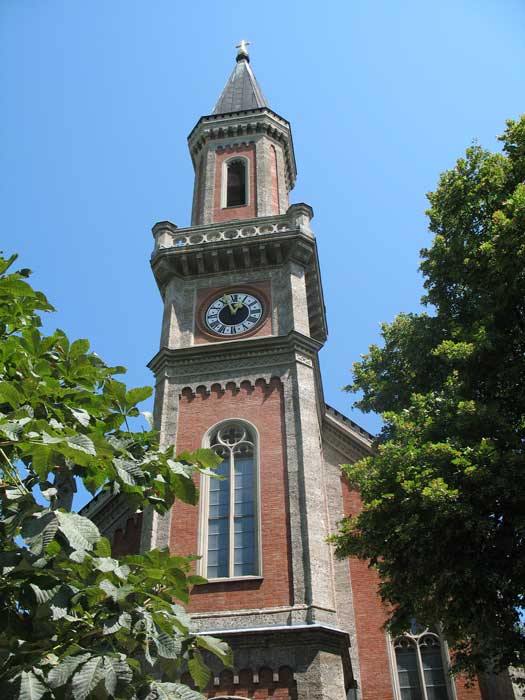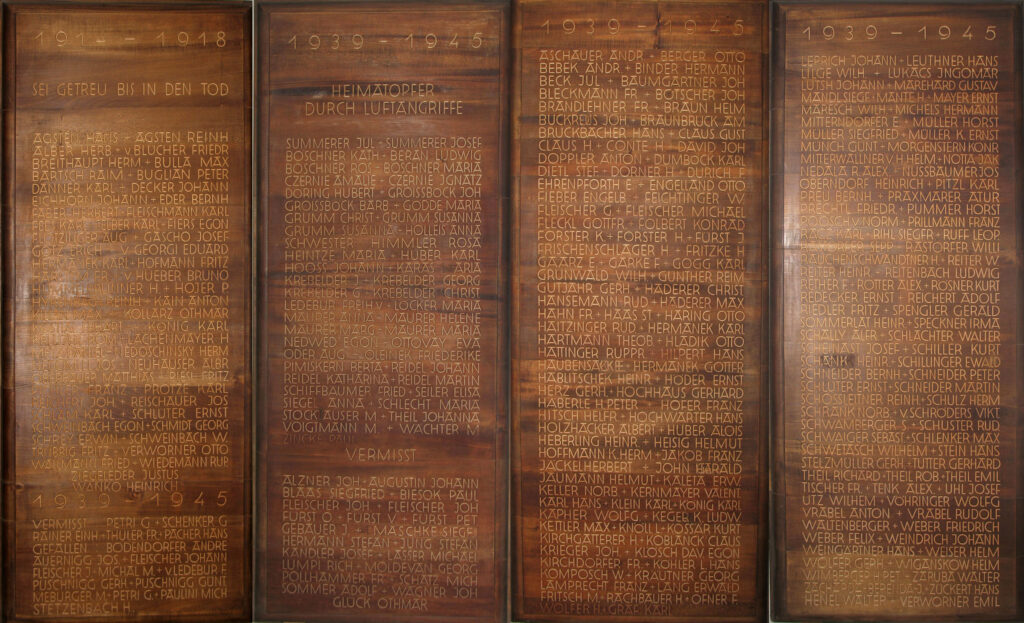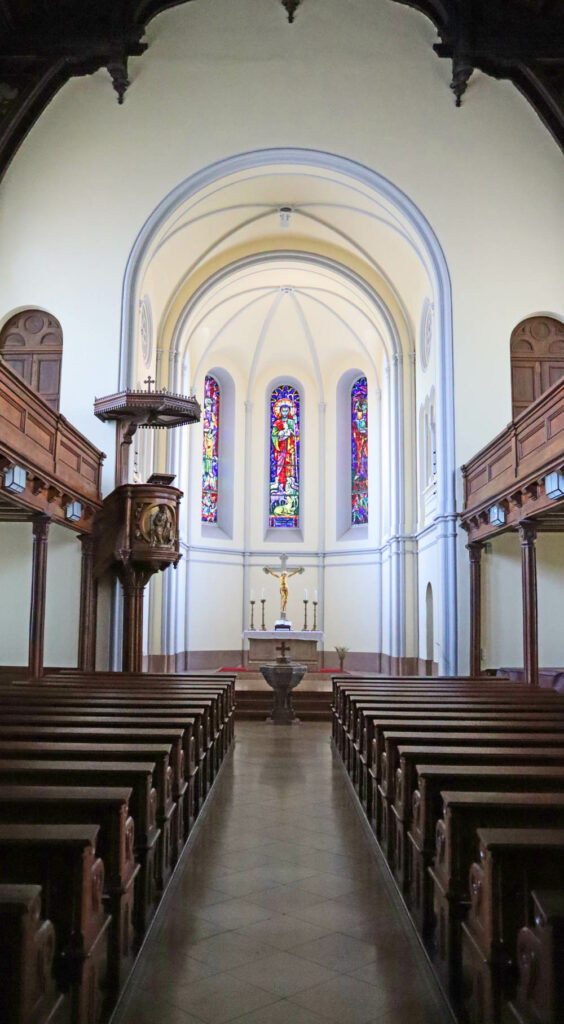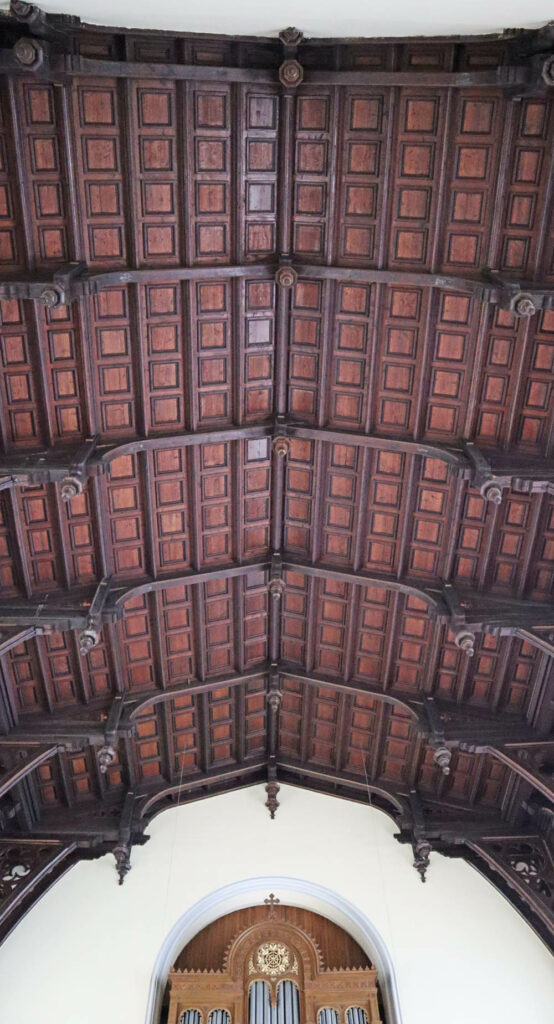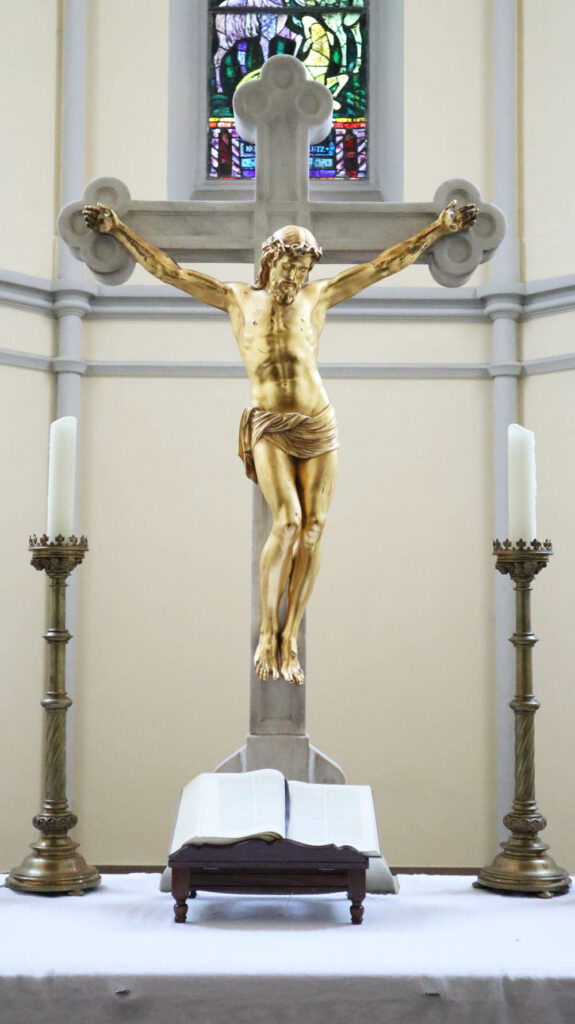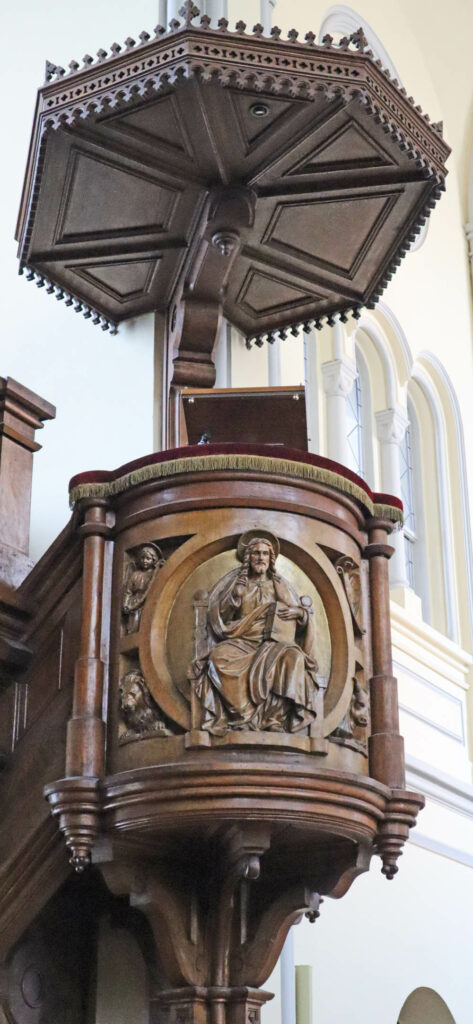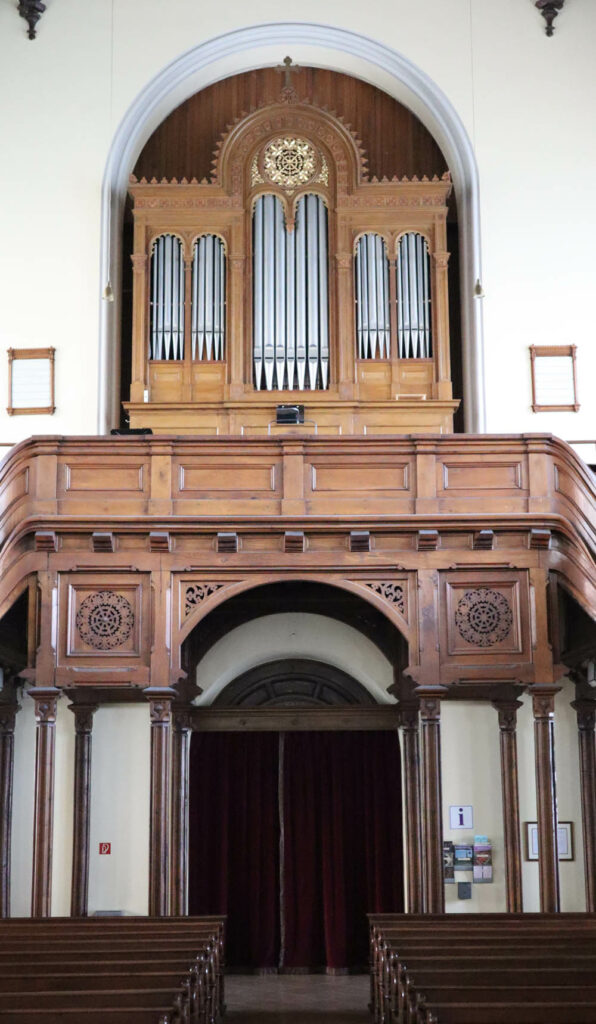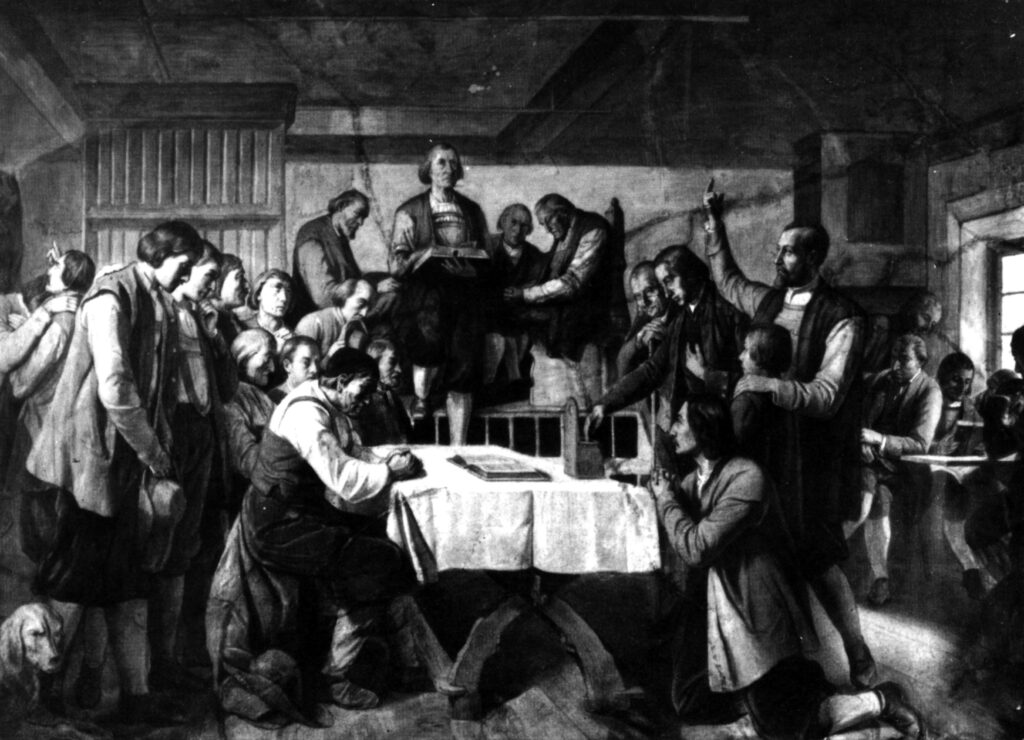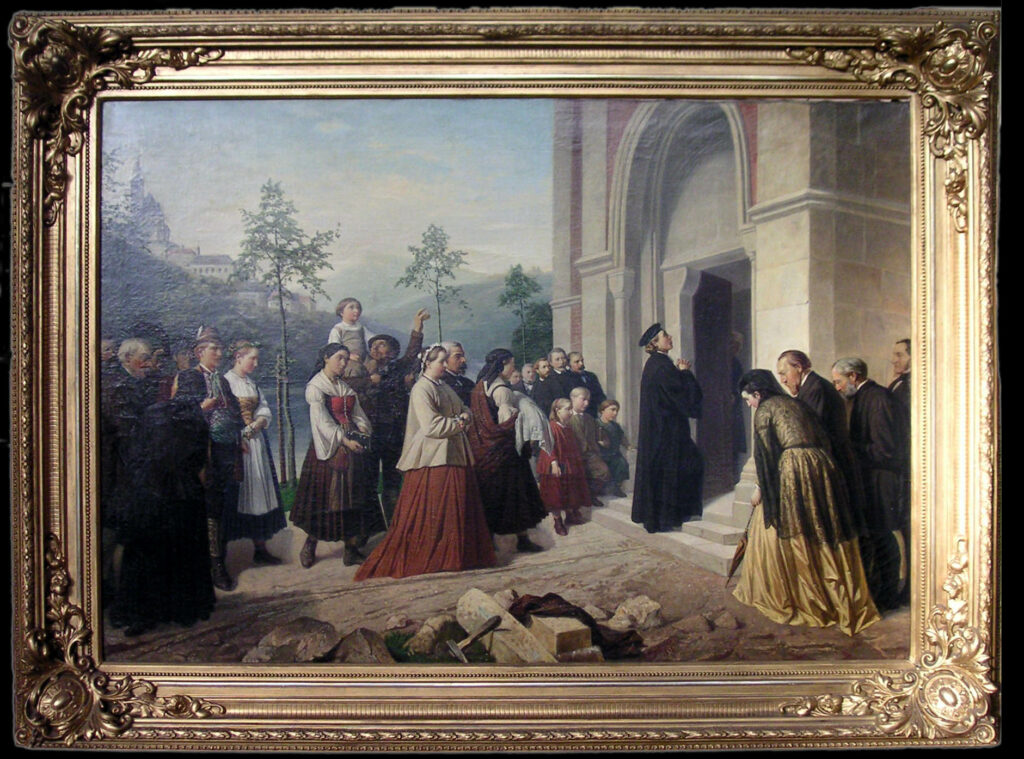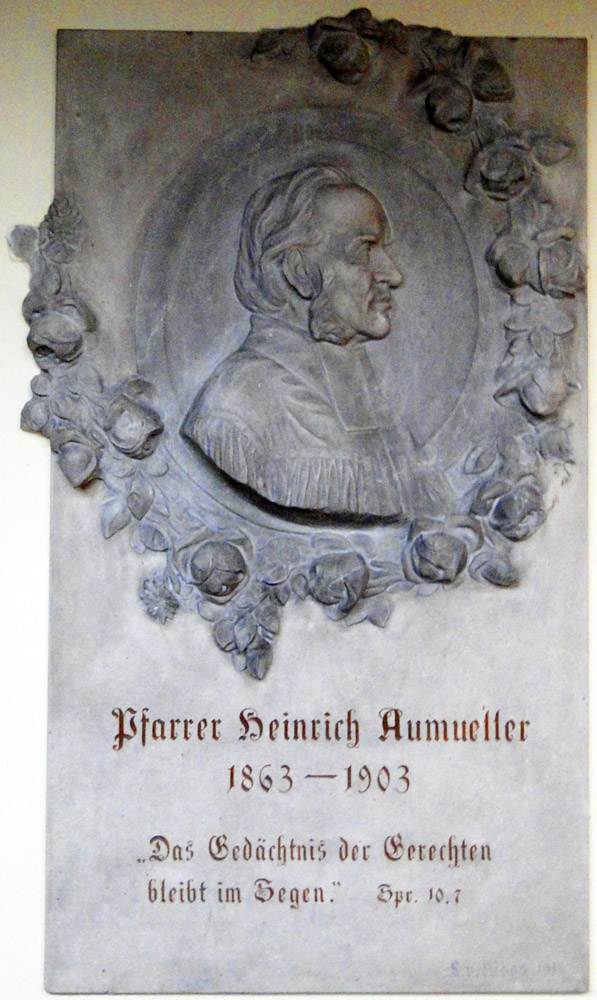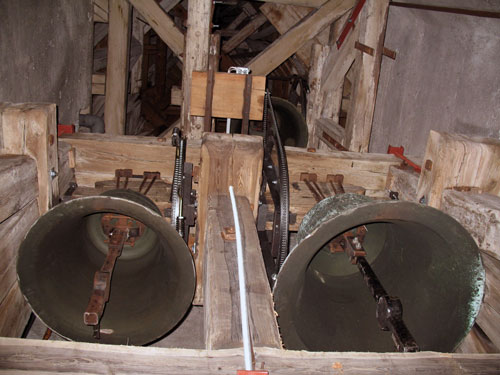Construction of the Protestant Christ Church in Salzburg began immediately after the establishment of the congregation in 1863 (architect Jacob Götz). The church was completed in 1867 in the style of Historicism.
The church is built of reddish brick, framed by Salzburg conglomerate and artificial stone.
With minor alterations, it has remained in its original state until today. The church is a characteristic example of the careful implementation of the „Eisenacher Regulativ“ of 1861, a guide for Protestant church construction in Germany.
